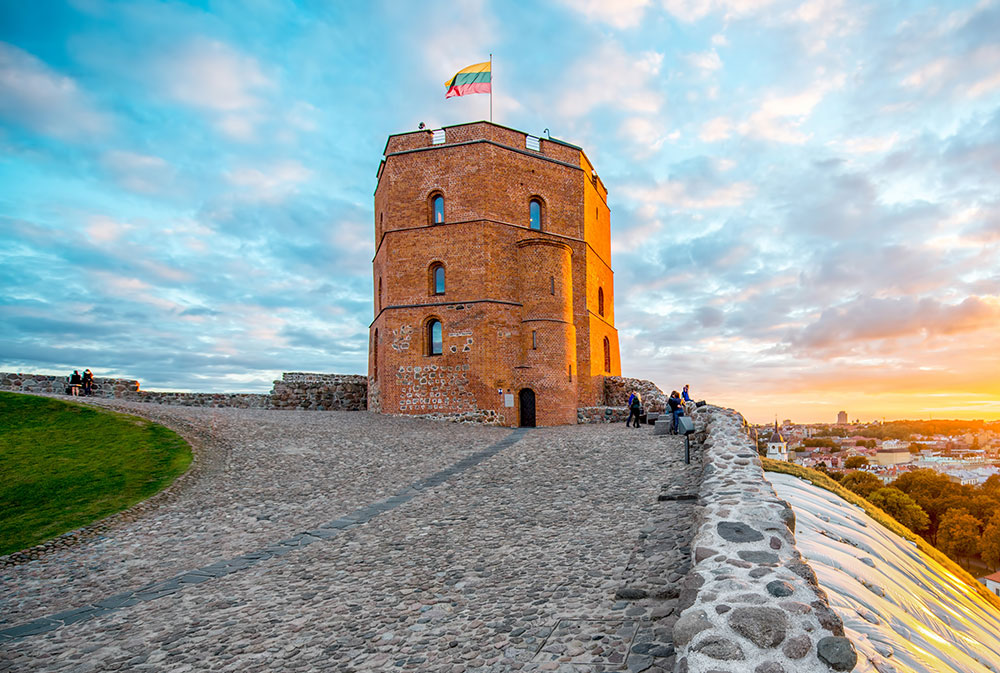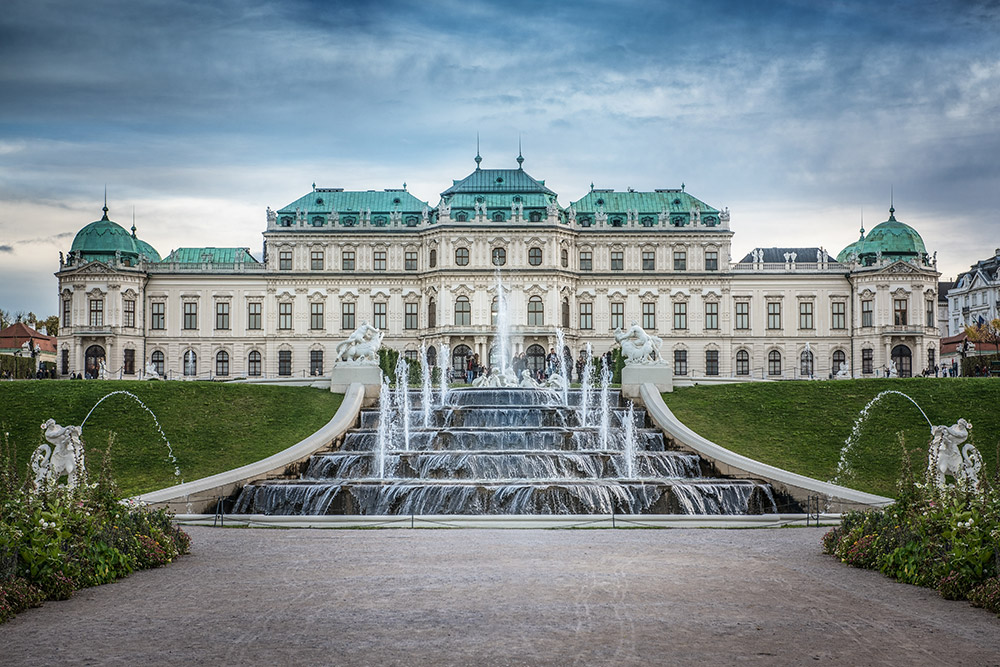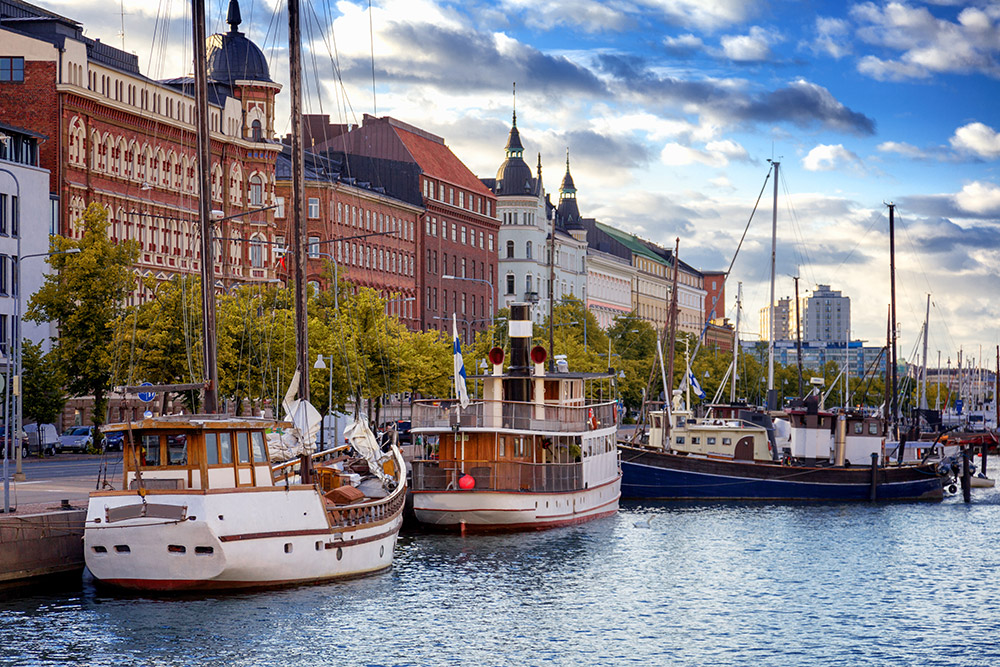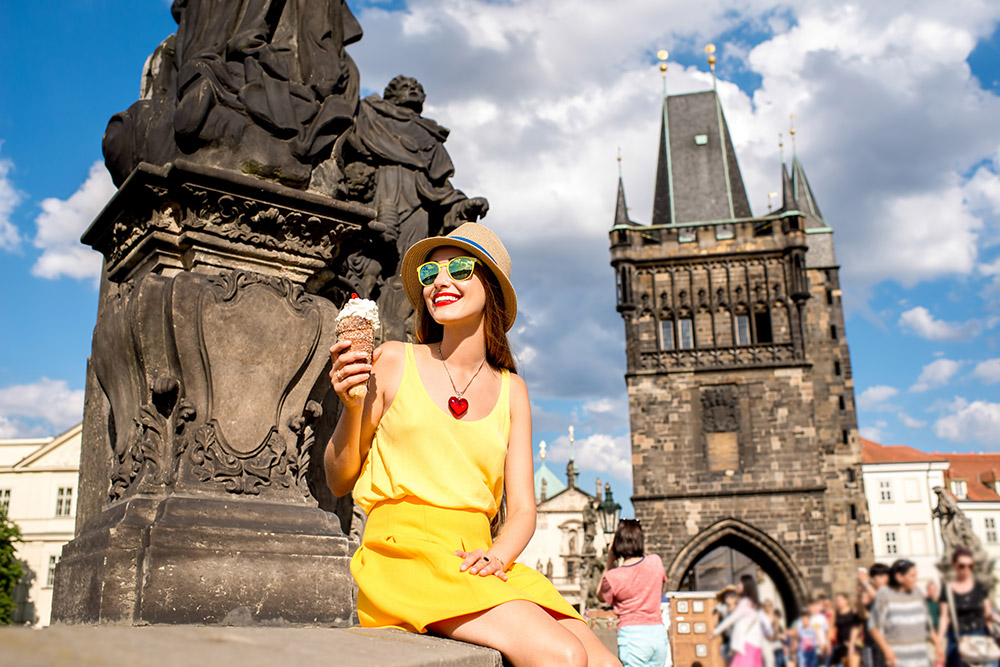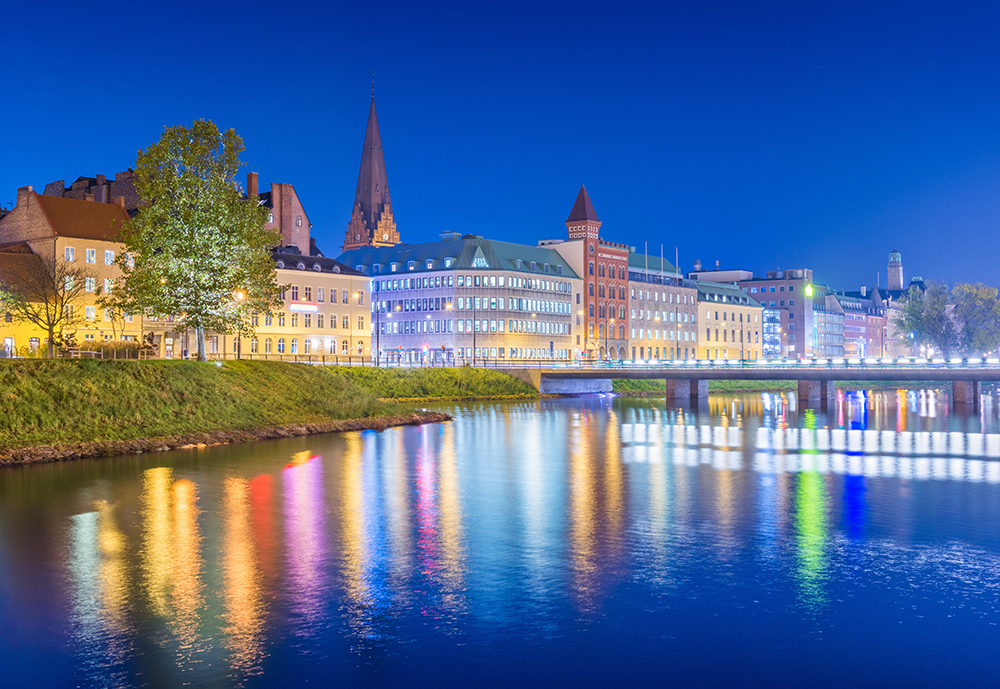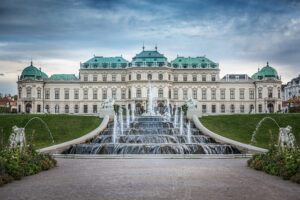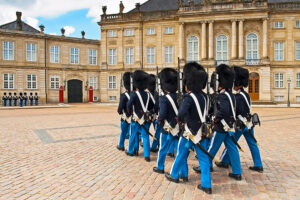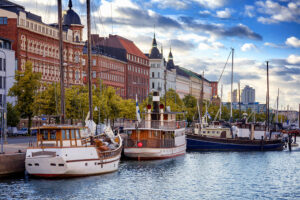Lithuania, a small country situated on the Eastern coast of the Baltic Sea, is a frontier of Western civilization in the expansive landscape of Eastern Europe. Throughout its history, Lithuania has faced prolonged conflicts, yet, in the face of these challenges, the country has consistently strived to build a free, vibrant, and self-sufficient state.
This tour is created to showcase the imprints of all historic periods, focusing on two of Lithuania’s four capital cities– contemporary Vilnius and medieval Trakai. It invites participants to explore the rich tapestry of history through the country’s architecture, nature, and cuisine.
Popular itinerary in contemporary Vilnius and medieval Trakai:
Day 1
Exploring Vilnius’ Old Town by Foot
Start your walk at Cathedral Square, which evolved from a settlement of craftsmen and merchants engaged in East-West trade along the nearby River Neris. Over time, it has become the heart of the city, with the surrounding area growing harmoniously around it.
A brief visit to the Palace of Dukes will guide you through the formation of the Grand Lithuanian Duchy in the 13th and 14th centuries, triggered by the Crusade invasion into the last pagan lands in Europe. Explore the dynasty initiated by Grand Duke Gediminas and its connections to prominent European royal families such as Poland, Prussia, Austria, Italy, and Sweden in the 16th and 17th centuries. Witness its decline under the mounting pressure from Moscow in the 18th and 19th centuries.
The cathedral stands as a symbol of Catholic dominance, introduced to this pagan land through the royal marriage of a Lithuanian Grand Duke and a Polish Princess in the late 14th century. This dynastic connection forged a bond between the two countries, creating the Commonwealth—a robust political and economic entity in the region that endured until the 18th century.
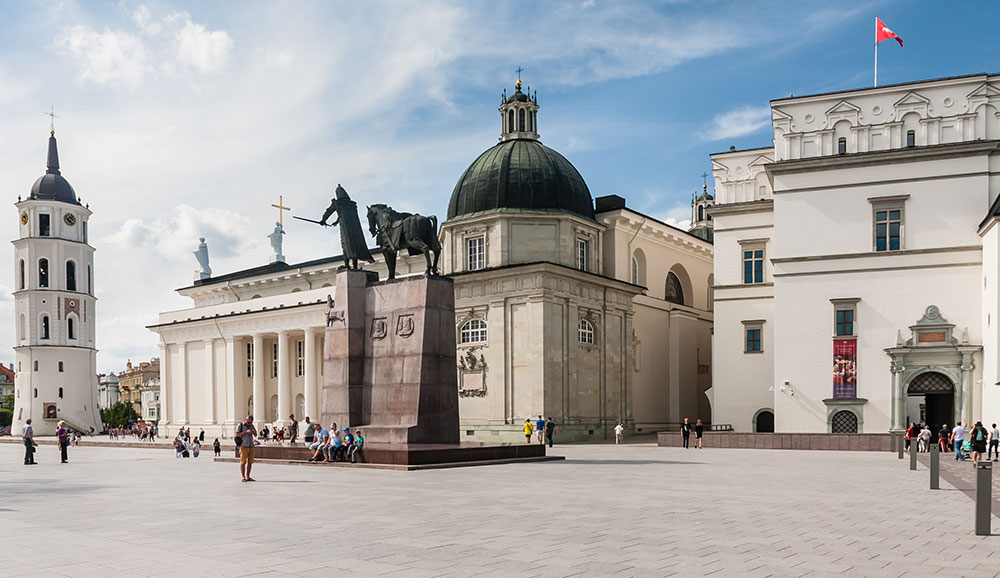
Continuing your exploration in the direction of the city’s development towards Poland, follow the path along what is now known as Castle Street (Pilies g). This thoroughfare serves as the central axis of the Old Town, connecting the Palace of the Grand Dukes to the Town Hall Square and leading out through the Gate of Dawn—an iconic gateway and chapel housing the globally renowned miraculous icon of Merciful Lady Mary.
Taking a left detour off Castle Street (Pilies g.) leads you to the enchanting Gothic Corner—a magical red brick complex comprising St. Ann’s Church and the Bernardine Monastery. Explore the Museum of Church Heritage, and venture further to discover the mysteriously charming Independent Republic of Užupis – a small neighborhood nestled across the Vilnia River. Here, you’ll find outdoor and indoor galleries, the multilingual Constitution Wall, and a vibrant atmosphere.
On the right side of Castle Street (Pilies g.), you will see the historic campus of Vilnius University—a diverse complex of picturesque courtyards, libraries, ceremonial halls adorned with frescoes spanning four centuries, and a vibrant example of Vilnius Baroque School, St. John’s Church. Continue your journey to the Presidential Palace, formerly the residence of Russian Empire governors, now transformed into a symbol of free democratic Lithuania. Next, you’ll reach the historic Jewish Quarter at the intersection of Stiklių and Gaono streets. This once thriving Jewish neighborhood is rich in Litvak heritage, yet was also the site of horrors of the World War II clash between Soviets and Nazis. Today it is a contemporary hub for Lithuanian design in music, arts, fashion, and food.
Exploring Vilnius From on High
Vilnius has historically flourished in the valley of the River Neris, surrounded by natural rolling hills that create ideal conditions for medieval fortifications and offer numerous vantage points for admiring the city from on high.
The classic spot to fully enjoy the panorama of both banks of the River Neris is the Gediminas Castle Tower on Gediminas Hill, named after the initiator of the royal Lithuanian dynasty. The Tower provides an exhibition on Vilnius castles and boasts a rooftop viewing platform.
For a more challenging perspective of the city’s development, from Cathedral Square to the modern glass and steel business center, visit the Hill of Three Crosses. Beyond its breathtaking panorama, this site offers a hillside hike, a climb of 444 steps, and recounts the story of a monument originally erected for Christian missionaries, bombed by the Soviets in the 1940s, and reconstructed in the 1990s following Lithuania’s independence.
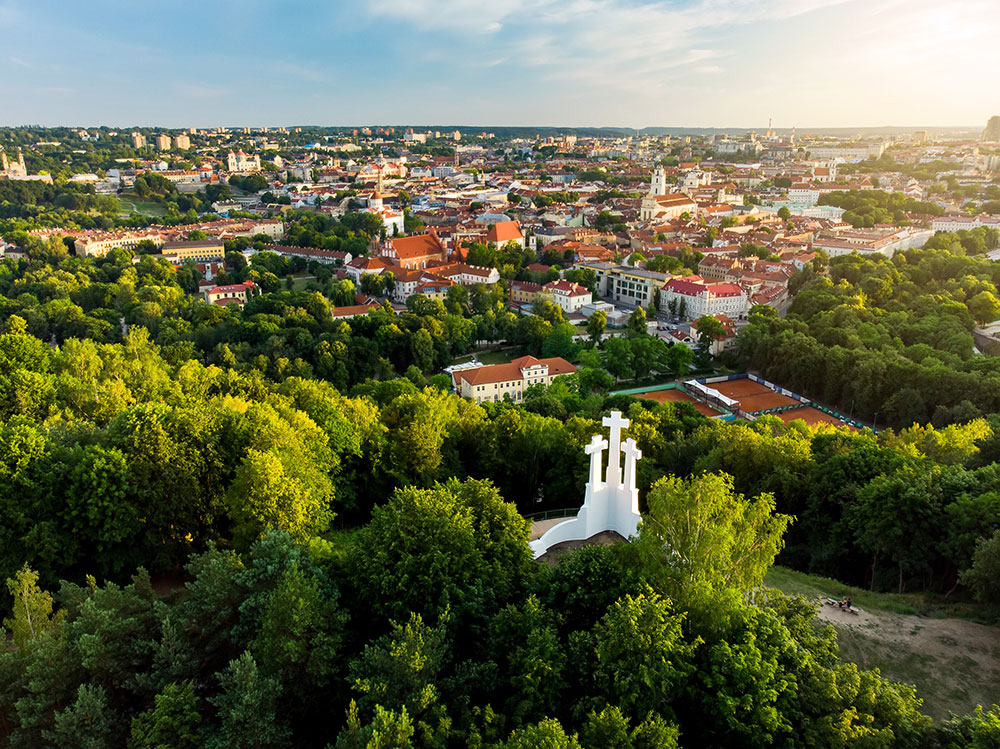
An unexpected viewpoint of the city is found at the Bastion of the Defense Wall, accessible by 77 steps from Užupis or by turning left from Castle Street (Pilies g.) at the Gate of Dawn. This location is most enchanting during sunset when the last rays cast a pink hue over the roofs, walls, and trees.
The Flavors of Historic Vilnius
Over centuries of ethnic blending, the Lithuanian culinary tradition has evolved, combining local produce with acquired techniques. Indulge in the array of homemade ice cream paired with expertly brewed coffee available at numerous cafes along Castle Street (Pilies g.)—the ingredients might pleasantly surprise you. For an authentic taste of summer, don’t miss the chance to savor a cold beetroot soup (or Pink Soup), where the combination of cucumber, beetroot, and dill perfectly captures the essence of the local garden. If you’re seeking more substantial fare, explore the diverse world of potato dishes, presented in various forms, textures, and combinations. To top off your culinary journey, there’s a plethora of options for nightcaps, including craft beer or mead tastings, as well as cocktail creations featuring local seasonal ingredients.
Day 2
Exploring Vilnius‘ New Town By Foot
By strolling along Gediminas Avenue to the Northwest from Cathedral Square, you will explore the last two centuries of Lithuanian history, during which it was at the intersection of empires,. Gediminas Avenue was developed as Vilnius‘ main thoroughfare during its tenure as the capital of the North Western Governorate of the Russian Empire, and it was a burgeoning industrial hub. It was also home to the headquarters of various ruling powers and central institutions, such as the Prime Minister’s Office, numerous ministries, the Central Bank, the Court House, and the Parliament.
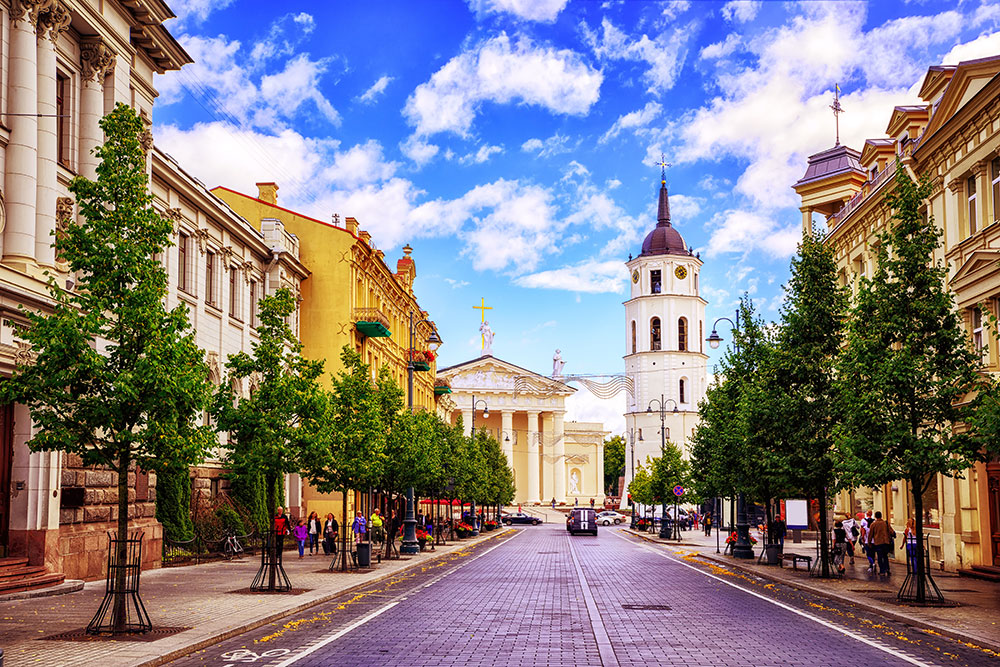
A tangible reminder of Lithuania’s Soviet past is the Museum of Occupations and Freedom Fights (informally known as the KGB museum). The musuem is housed in the right wing of the Court House (formerly the KGB headquarters), situated prominently in front of Lukiškių Square (formerly Lenin Square). This museum provides a profound and authentic portrayal of on-the-ground events during the World War II, as well as daily life under the Soviets, narrated by participants and direct witnesses of those historical events.
A vivid representation of the era under the Russian Empire (throughout the entire 19th century) is Lukiškių Priso. Operating as a law enforcement facility for over 150 years, it has recently been coverted into a distinctive cultural hub, concert venue, and historical site, transforming the harsh realities of human nature into artistic expression.
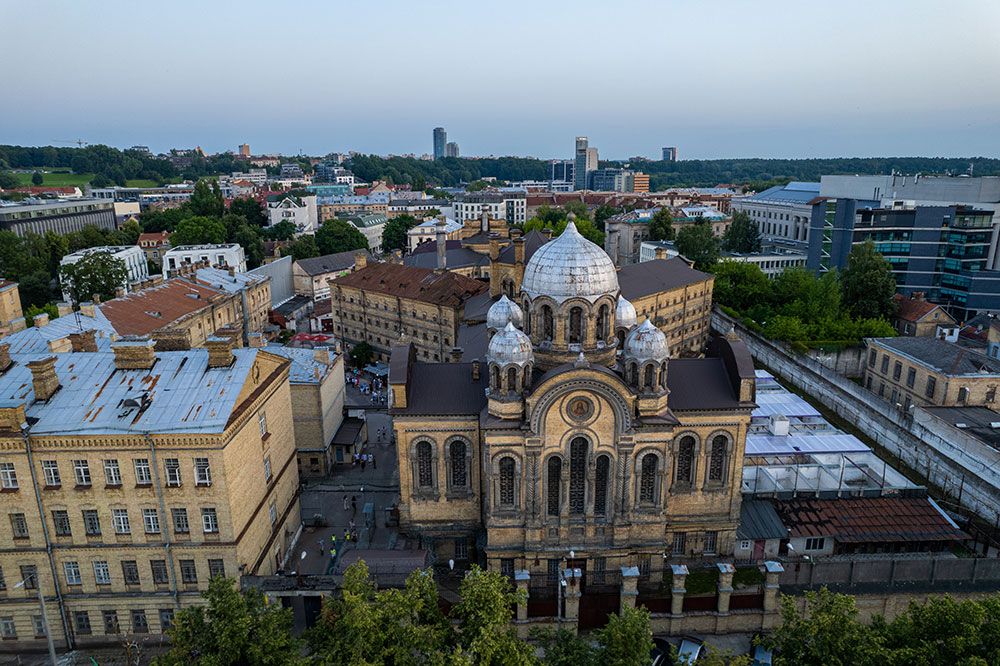
The silent witnesses to the 30-year struggle for independence against the Soviets are the remnants of barricades surrounding the Parliament of Lithuania, known as Seimas. Inspired by the massive turnout of the Baltic Way in August 1989—a historic human chain spanning about 422 miles and involving over 2 million participants from Vilnius to Riga and Tallinn—the Lithuanian Parliament boldly declared independence from the Soviet Union in March 1990. Unfortunately, iIn January 1991, this act incited a Soviet military attack on unarmed individuals who had erected these barricades, defending the legally elected government through sheer unity.
The Flavors of New Age Vilnius
Experience the taste of the last two centuries in the vicinity of Vilnius Railway Station. All times and periods mix into funky chaos at the Halės Farmers Market where you can savor traditional smoked meat, rye bread, and fresh cheese as well as contemporary favorites. Explore the diverse street network surrounding the station and the market, where a fusion of ethnicities from the East, including Georgian and Kyrgyz, offer a unique and enticing culinary experience.
Day 3
Day Trip to Trakai
A quick half-hour car, bus, or train journey to the west of Vilnius takes you to a locale that transports you to a different place, time, and mood. Trakai, a quaint town that rivaled Vilnius in size and significance during the 14th century, unfolds the grand history of Lithuanian medieval statehood. It is enveloped in the pristine nature of clear lakes, rolling landscapes, shadowy forests, and marshlands.
To fully experience this unique locale, take a leisurely stroll along Lake Galvė, enjoying views of both the peninsula and island castles. Cross the wooden bridges to explore the exhibitions of Trakai Castle on the island, vividly illustrating the ambition, creativity, and determination of Lithuanian rulers in the 15th century. To enhance the experience, numerous options allow you to observe and immerse yourself in the natural surroundings of these historic treasures—sail along the lakes on a sailboat with the friendly crew of Trakai Yacht club, kayak in neon-lit boats during the day or night, stand-up paddleboard across the lake, or cycle around Lake Galvė to Užutrakis Manor for an additional perspective of the castles and the town.
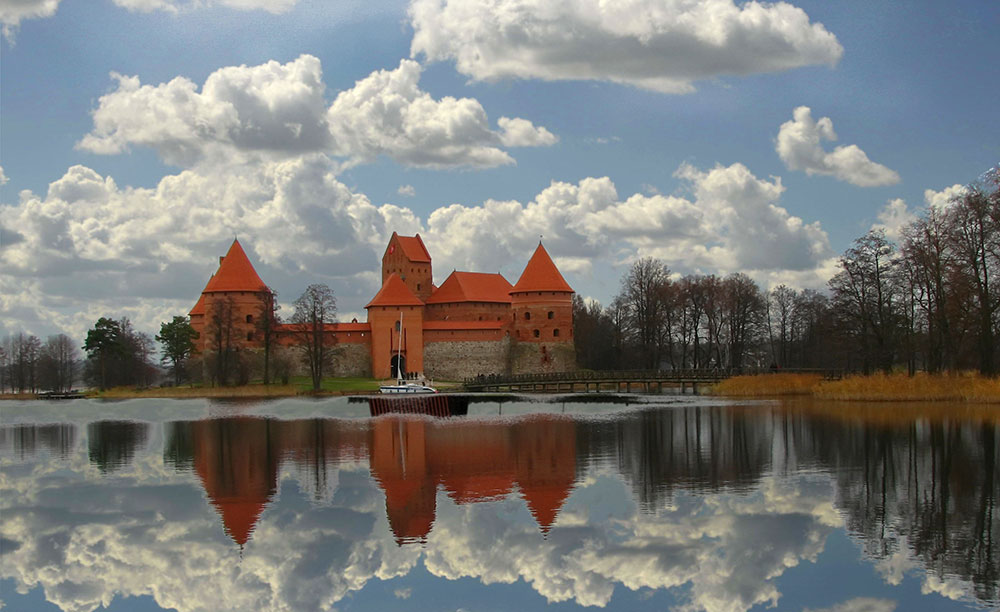
In addition to exquisite nature and historic value, Trakai is the center of Karaim culture and heritage. Karaims are the ethnic minority recruited as warriors from the coast of the Black Sea as far back as the 15th century. They are famous for preserving their Turkish language, old religion, and the cuisine of Middle East origin. Make sure to try their traditional pastry – Kybyn, most authentic with lamb, and taste their spicy bitter Krupnikas.
To enhance your City Break Weekend experience, explore the diverse cultural events Trakai has to offer. Select from a variety of activities to customize your weekend according to your preferences.


